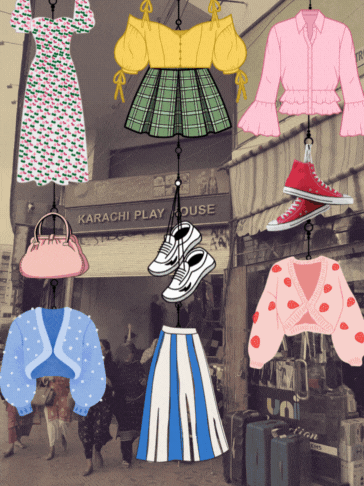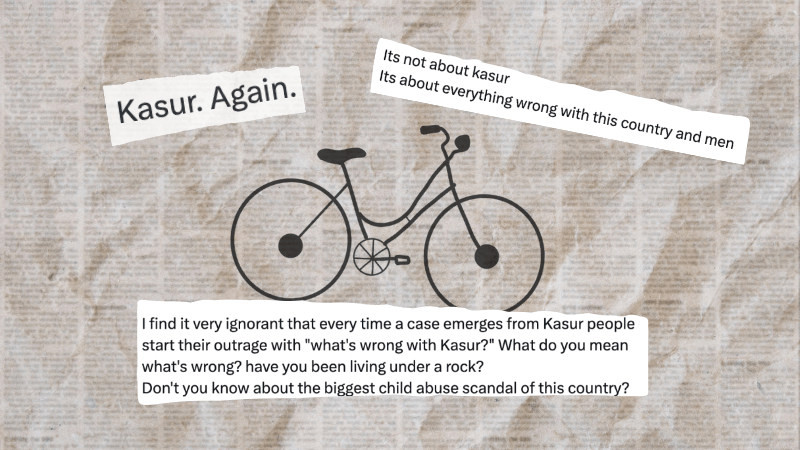Who does art belong to? This exhibition ponders the question
When we usually visit an art gallery, we walk in, pick up the catalogues and price lists and proceed to enjoy some art.
Sometimes, our scrutiny extends to the artworks' placement, the artist’s agenda or the use of the space itself. The latest show at Sanat Gallery, “What Belongs to You” takes this formula in its hand and mashes it up till we are forced to rethink our notions of what art is, how it should be viewed, and what its purpose is.
The show marks the gallery’s 2nd anniversary, and fittingly questions the dynamics of the relationship between the gallery, the artist, the curator and the audience in a market driven Pakistani art world.
We don’t just see a straight up show with six artists; over here, the curator in a way acts as an artist. Aziz Sohail does not merely organise the show and bring together a group of artists, but formulates an entire concept that defines the show, and raises questions about the importance of the various stakeholders of art through the works he chooses to include. We don’t find the exhibition catalogue at the door as we normally would, but as the first piece of the show, turning itself, and the entire show, into art as well.

Instead of merely providing information about the participating artists, the catalogue instead opens up by questioning what the audience expects of a catalogue (a better understanding of the show and the works, for example) and then proceeds to assert that this power lies with each individual himself, allowing us to take ownership of the works.
Further on, we find a slightly satirical critique of the act of curation, instructing aspiring curators to become a “social butterfly” and “be hip” in order to succeed, and suggesting currently trending topics for a show to choose from, which aptly include the refugee crisis and capitalism.
Our attention is also drawn towards the elitist nature of the art world, and how only a certain kind of people with money and the right connections are invited into its exclusive club.
Playing with placement
The nature of the show is highly experimental; with each piece presented in innovative displays that add new layers of meaning to the work.

So you won’t find a watercolour by Sajid Khan depicting his usual war-related imagery of fighter aircrafts and jets simply framed and up on the wall, but instead thumb-tacked onto the front cover of a found book with the rather pertinent title “World War II - In Photographs”, or on used drawing boards in other cases. The choice of display brings to mind the indoctrination and institutionalization of violence, and how it is almost systematically ingrained in our minds, with war being made a spectacle in books.
This tendency towards progressive ideas of presentation and mediums runs through every work.

Farhat Ali has worked with found objects and hung a two-way loose canvas in the middle of the space. Naira Mushtaq has presented one of her digital prints inside a music box, while Zoya Siddiqui’s 35 9x14 cm metallic prints are displayed like postcards for sale at a souvenir shop. Ammar Faiz’s intricate collages are casually taped onto used pieces of cardboard. These novel methods of exhibition are not just for the sake of contemporaneity but are integral for a better understanding of the artist’s message.
Owning the art
The curator offers his critique of the value of art and the politics of the art market through every piece. The show is simultaneously laced with a sense of questioning the value of certain mediums and their relevance in the 21st century.
For instance, Madhya Leghari questions the idea of buying or possessing art, and whether its value can be determined in terms of its marketability. For her triptych, she chooses a newspaper article titled “Artvestment” dealing with these issues and presents it in 3 different mediums and varying sizes; a large vinyl sticker on the wall, an oil on canvas painting, and a photocopy, a stack of which were also available at the entrance desk for anyone to pick up. Each medium, while poles apart in cost and market value, is brought to the same level of artistic value.
It is also interesting to note that the same piece which was handed out to the public for free was also later sold to an interested buyer, even though the piece was not initially for sale at all, providing insights into how the art market works.

On the other hand, Farhat Ali attempts to preserve the art of painting itself and analyses its deterioration as a relevant medium in the realm of contemporary art.
In this context, "Untitled 1" aptly shows us a shop window shutter with the logo of a decorative paints company painted across it, making us look at the demotion of painting from fine art to commercialism both through the content and through the medium of found objects. "Untitled III" looks at the same concept in terms of the digital age with its quick image making and sharing through social media, with the painted canvas being simplified into, or hidden behind, plain horizontal colored lines painted onto blinds, like digital glitches that can be controlled by the audience.

Ideas of ownership and possession are also explored in certain pieces. Naira Mushtaq questions notions of authorship and rights to possession of art by raising photographs by others to the level of art with her name. She deals with ethical and moral implications of altering source material and selling it as your own without the knowledge of the original author, and in the absence of legal obligations.

Interspersed throughout our experience of the show is the running commentary of the curator and the artists from within the catalogue, giving ideas as to how the works can be read or interpreted. The viewer is invited to provide his/her own opinion or reading of the works in a space marked “viewer’s notes”.
The show seeks to raise some important questions about the condition of the art world and whether the audience and the artist can be deemed equally important for art to exist, and we are left to ponder over the ultimate question of who art belongs to: the curator, the gallery, the artist, the audience, or everyone?
"What Belongs To You" wraps up at the Sanat Gallery today.













Comments